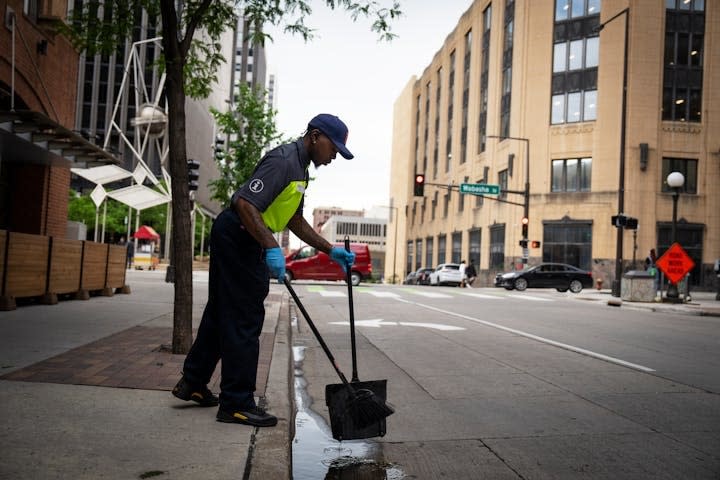Expand downtown St. Paul safety program

Opinion editor's note: Editorials represent the opinions of the Star Tribune Editorial Board, which operates independently from the newsroom.
•••
They're the friendly people in the neon-colored vests or jackets you'll see on the streets of downtown St. Paul and Minneapolis. As one of the most visible parts of the Downtown Improvement District's (DID) programs, they have become a familiar, helpful presence as safety ambassadors who offer directions, keep things clean and provide help to those in need of services.
In St. Paul, a proposal to expand the DID to the Lowertown part of downtown merits support. The St. Paul Downtown Alliance wants to extend the mostly privately funded DID into that neighborhood, an area that has seen growth in its residential population in recent years.
That section of downtown should be covered by the DID because the program has proven its value where it now operates. According to St. Paul program leaders, the area DID covers now has seen a 40% drop in what are known as "quality of life" or "livability" crimes such as disorderly conduct, panhandling, vandalism and graffiti. Over the same period of the last three years, Lowertown saw the same types of calls increase by 25%.
"Making half of downtown better isn't enough," said Joe Spencer, president of the Saint Paul Downtown Alliance. "People don't recognize those imaginary lines between one part of downtown and another."
He told an editorial writer that what's been learned in the past three years is that DID efforts work and should cover more of downtown.
"If we're able to expand, we can put more boots on the ground and more focus on high-pedestrian areas," he said. "Our team is not just a group of greeters who pick up candy wrappers — they are really effective at addressing public safety, the signs of social disorder that make us feel uneasy."
The existing district, which is overseen by a board of property owners, contracts with the Downtown Alliance to manage operations like its safety communications center, where a dispatcher helps coordinate communications between private security teams, police and social service agencies. With a camera-sharing program and live communication channel, officials in the center are able to see and spread real-time safety information.
If approved, the district would cover all of downtown from the Xcel Energy Center to CHS Field.
Legislators passed a law last year that allows residential property owners to also be assessed for the services, which spreads out the cost among contributors. The city and county also voluntarily contribute toward the cost.
City Council members must first vote on the proposal. Then property owners must weigh in: If owners subject to 35% of the proposed service charges file objections, it is vetoed. If it is approved, the St. Paul DID could increase its budget to about $2.7 million and its number of ambassadors from 10 to 30.
Also with approval, safety ambassadors could have better training and equipment, Spencer said. And the program could pay for a city attorney position to address livability crimes and pursue repeat offenders.
In Minneapolis, DID has been operating for about a decade and touts a cleaner, safer and greener downtown through its various programs. Its successes also help support the proposal to expand the effort to cover all of downtown St. Paul.

